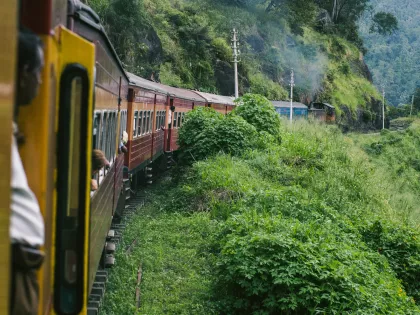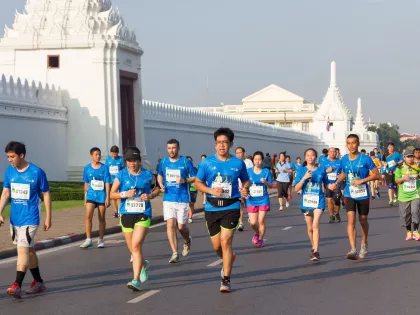Sri Lanka's World Champions - Cricket
On the night of March 13th, 1996, Sri Lanka were declared the victors over India in a one-sided Cricket World Cup semi-final in Kolkata -- the match being abandoned as Indian fans rioted in disgust at their team's abject capitulation. Four days later in the final in Lahore, favourites Australia were dispatched with similar ease, and Sri Lankan captain Arjuna Ranatunga lifted the trophy that few before the tournament had believed Sri Lanka could possibly win.
The Privileged Position of Cricket
World cricket at the time was the preserve of just a handful of nations which held 'test' status -- the right to play five-day 'test' matches against each other at the highest level. Sri Lanka had been admitted to this elite group in 1981, the first country to be granted membership since Pakistan in 1952, and the eighth overall. Their early record was poor, though no worse than that of earlier debutants. It took four years to record their first test victory, and fourteen to win a game outside Sri Lanka, which they finally achieved in 1995, just a year before they were crowned champions of the world.
The thing is, the Cricket World Cup is not about test cricket -- the longest form of the game. Its matches are played over just one day, with each team batting once, for 50 overs. Essentially each team faces 300 balls, from which they must score as many runs as possible, while hoping to restrict the opponents to a lower total when it is their turn to bat. The shorter game levels the playing field -- a little. In the long form, the superior team will inevitably prevail; in the short form the underdog has a puncher's chance.
A New Approach - Sri Lankans Attack
What Sri Lanka did in 1996 was not a matter of getting lucky, however. Instead, they re-invented the way the game was played. The traditional approach of a batting team had always been to bat carefully at first, settling in, setting a platform, keeping things steady, avoiding unnecessary risks -- and then if things were going well, they could accelerate their scoring later, like a middle-distance runner making a late sprint for the line. Not the Sri Lankans. They would attack from the start, and if things went well, would just keep on attacking. In the group stages they racked up a world record total of 398 against the unfortunate Kenyans, but still the question mark remained as to how they would fare against the very best sides.
Their quarter final against England settled the issue once and for all. England played their traditional, cautious cricket, setting the Sri Lankans a respectable target to win the game, then looked on in hapless bewilderment as the Sri Lankan batsmen launched a ferocious assault that the English should have anticipated, but still could not quite believe. The result was never in doubt -- and from that moment on, the rest of the world understood what the Sri Lankans already believed; Ranatunga's team had the skill and the strategy not only to lift the World Cup, but to change the way that cricket would be played for years to come.
Long History
It may have taken Sri Lanka a long time to reach the pinnacle of the global game, but cricket has a long history on the island since it was introduced by the British when they occupied Ceylon, as it then was known, since 1796. While professional domestic cricket leagues exist, Sri Lanka is perhaps unique among the test-playing nations in that the biggest cricketing events on the calendar are the so-called 'Big Matches' which are actually played between schools. The oldest of these contests was established in 1879, between Royal College, Colombo, and S. Thomas' College, Mt. Lavinia. It was first played on the famous Galle Face Ground where today the famous Taj Samudra Hotel stands, and marked the first instance of three-day cricket being played between schoolboy sides. Nowadays there are around thirty such Big Matches that take place between various schools each year.
Cricket today is undoubtedly the most popular sport in the country, and players such as Kumar Sangakkara, Mahela Jayawardene, and Mutthiah Muralitharan are national heroes who stand among the all-time greats. When you visit Sri Lanka, you will see games taking place everywhere, between local club sides on carefully tended pitches, or between children playing wherever they have a bat, a ball, and a patch of open ground.
See For Yourself
If you want to experience the atmosphere and excitement of an international match in Sri Lanka, then a one-day game at Premadasa Stadium in Colombo would be a good choice. It's perfectly safe, so you don't need to worry about the kind of trouble associated with football where rival fans need to be kept apart. Do watch your pockets carefully if you're entering or leaving in a big crowd though. If you can choose seats higher up, rather than at pitch level, you'll have a better overview of what's going on, and the locals will usually be happy to chat and provide explanations if necessary. To buy tickets, your hotel will probably be able to assist if you let them know in advance that you're interested.
Finally, if you happen to be in Galle on the south coast when there's a test match going on, you can watch for free! The old Galle Fort overlooks the ground, which itself sits right next to the Indian Ocean, and gives a perfect view of the proceedings from on high. There can be few lovelier places in the world to sit, relax, and watch world-class professional sport, so if you get the chance, don't miss it!
Visit our hotel in Sri Lanka: Centara Ceysands Resort & Spa, Sri Lanka



Share :-
-
-